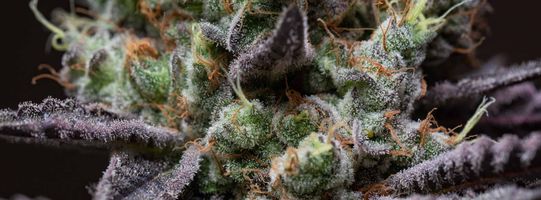What Are the Differences in Minor Cannabinoids? A Comprehensive Guide
Cannabis is best known for THC and CBD, but the plant contains over 100 cannabinoids, many of which are considered "minor" due to their lower concentrations. These minor cannabinoids, such as CBG, CBN, CBC, and THCV, play unique roles in the plant’s effects and potential benefits. This guide explores the differences between minor cannabinoids, their properties, potential uses, and how they compare to major cannabinoids like THC and CBD.

What Are Minor Cannabinoids?
Cannabinoids are chemical compounds in the cannabis plant that interact with the body’s endocannabinoid system (ECS), a network of receptors (CB1 and CB2) regulating functions like mood, pain, appetite, and immunity. While THC (tetrahydrocannabinol, psychoactive) and CBD (cannabidiol, non-psychoactive) dominate in concentration and research, minor cannabinoids exist in smaller amounts but contribute to the plant’s therapeutic and entourage effects (the synergistic interaction of cannabis compounds).
Minor cannabinoids are typically present in trace amounts (less than 1–2% of the plant’s composition), but selective breeding and extraction techniques are increasing their availability in products like oils, tinctures, and edibles.
Key Minor Cannabinoids and Their Differences
Here’s a breakdown of the most studied minor cannabinoids, their effects, and potential benefits:
What It Is
: Known as the "mother cannabinoid," CBG is the precursor to THC, CBD, and other cannabinoids. It’s non-psychoactive and found in low concentrations (usually <1%) in mature cannabis plants.
Effects and Benefits
:May reduce inflammation and pain (similar to CBD).Potential neuroprotective properties, studied for conditions like Huntington’s disease.May have antibacterial effects, particularly against MRSA.Could support appetite stimulation and digestive health (e.g., for IBS).
Key Difference
: Unlike THC, CBG is non-psychoactive and may counteract THC’s psychoactivity by binding to CB1 receptors without producing a high.
Use Cases
: CBG oils, capsules, or isolates for pain relief or neurological support.
What It Is
: CBN forms when THC degrades through exposure to oxygen, light, or heat. It’s mildly psychoactive but far less potent than THC (about 25% of THC’s psychoactivity).
Effects and Benefits
:Promotes sedation and sleep, often used in products targeting insomnia.Potential anti-inflammatory and pain-relieving properties.May stimulate appetite and support bone health.
Key Difference
: CBN’s sedative effects make it distinct from stimulating cannabinoids like THC or THCV. It’s more prominent in aged or oxidized cannabis.
Use Cases
: CBN tinctures or edibles for sleep aids or chronic pain relief.
What It Is
: A non-psychoactive cannabinoid found in small amounts, CBC is derived from CBG and is common in younger cannabis plants.
Effects and Benefits
:May enhance mood by increasing anandamide (a natural endocannabinoid) levels.Potential anti-inflammatory and analgesic effects, especially when combined with THC.Early research suggests neuroprotective properties and potential for acne treatment due to anti-inflammatory effects on sebaceous glands.
Key Difference
: CBC doesn’t bind strongly to CB1 or CB2 receptors but interacts with other receptors (e.g., TRPV1), contributing to mood and pain modulation.
Use Cases
: CBC isolates or full-spectrum products for mood support or inflammation.
4. THCV (Tetrahydrocannabivarin)
What It Is
: A psychoactive cannabinoid structurally similar to THC but with distinct effects. It’s found in small amounts, particularly in certain African and Asian cannabis strains.
Effects and Benefits
:Produces a shorter, clearer high compared to THC, often described as energizing.May suppress appetite (unlike THC’s "munchies" effect), showing potential for weight management.Potential anti-convulsant properties for seizure disorders.May regulate blood sugar, studied for diabetes management.
Key Difference
: THCV can act as a CB1 receptor antagonist at low doses (reducing THC’s effects) or agonist at high doses (producing a mild high), unlike THC’s consistent psychoactivity.
Use Cases
: THCV-rich products for focus, energy, or metabolic health.
